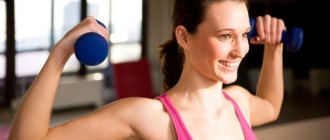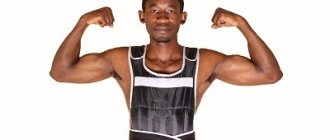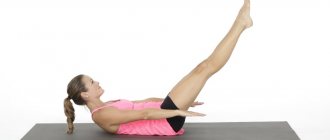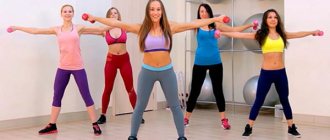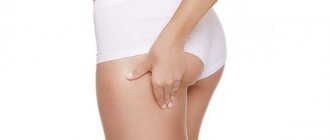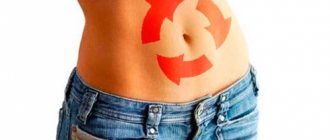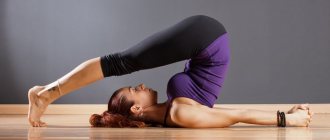A set of special running exercises will help correct inaccurate movements or running technique. When performing intense exercises, almost all muscles are involved, and accordingly, the power of the whole body increases.
Running involves many muscles that perform different functions. In order for the muscles not only to receive physical activity, but also to form the correct structure of movements, special running exercises (SBU) were developed. This is a set of running exercises aimed at developing strength, power and coordination of all leg muscles involved in running. Specific running exercises will enhance the specific physical and technical fitness required for running. Each of these exercises is a separate accented element of running.
SBU is precisely a set of exercises, so you always perform at least 5 exercises in a series. Experienced coaches include the SBU complex in every warm-up. The length of the segment for performing SBU depends on the purpose of the exercise and the preparedness of the performer. For a special warm-up – from 20-40m; for training – 60-70m. The number of repetitions is from 1 to 6 times.
Don't miss: Physical Fitness for Runners: 30 Bodyweight Exercises
Why perform SBU
Special running exercises are used for three purposes:
1. As part of a warm-up, to activate and warm up target muscle groups. The length and intensity of the exercises will be small (20-40 m; 1-2 series).
2. As a means of correcting running technique. Obviously, it is extremely important for beginners to perform SBUs in every workout. Correction of physical deficiencies in running technique should take place while the body is fresh and adequately responds to a small load (40-50 m; 2-3 series).
3. As a means of special physical training for a runner. For example, the “deer run” exercise is often used as the main block in training, and is performed in repetitions of 8 to 12 times at maximum intensity, lasting from 60 to 100 m. This type of training is used by trained athletes to develop strength endurance.
Subscribe to “Marathon Man” on Telegram. Announcements of articles and useful selections every week.
Pros and cons of the exercise
High hip raises are part of the warm-up exercises and field athletes and martial artists. And also as one of the main training exercises for many team sports.
The main benefit of the exercise is that running with high hip lifts works out almost all the muscles of the legs , starting from the buttocks and ending with the lower legs.
Considering that running with high hip lifts is a more complicated analogue of easy running, all the advantages inherent in regular running can be safely attributed to high hip lifts. If the exercise is performed in place, then high hip raising becomes an analogue of running in place with all the ensuing advantages.
The disadvantages include the fact that the exercise is contraindicated for people with problems in the knee joints. The exercise primarily targets this joint. Therefore, any injury can get worse.
Also, if there are serious problems with the spine, then the exercise cannot be performed. Other contraindications are strictly individual.
To improve your performance in middle and long distance running, you need to know the basics of running, such as proper breathing, technique, warming up, knowing how to do the right run for race day, doing the right strength work for running, and others. Therefore, I recommend that you familiarize yourself with unique video lessons on these and other topics from the author of the site scfoton.ru, which you are currently on. For site readers, video tutorials are completely free. To receive them, just subscribe to the newsletter, and in a few seconds you will receive the first lesson in the series about the basics of proper breathing while running. Subscribe to the lesson here: Running video lessons . These lessons have already helped thousands of people, and they will help you too.
0
Author of the publication
offline 7 months
Exercises
Jumps with step setting or “spring”
Execution technique: reminiscent of jumping rope, but with forward movement. The push-off occurs from the forefoot, not the heel. After pushing off, bend your thigh slightly at the knee joint and lift it up a little. Landing occurs practically on two legs at the same time: first on the pushing leg, and then actively on the swing leg. The movement is short – half a foot.
Objective: The main emphasis is on the muscles and ligaments of the ankle joint that produce push-off.
Frequent mistakes: weak push-off, wide strides, arms bent at the elbows.
Running with high hips
Execution technique: when pushing off with the supporting leg, you need to raise the thigh of the swing leg high. High frequency hip lift. Stand high on your feet without dropping onto your heel. When landing, the leg is firmly placed on the support. The emphasis in the exercise should be on removing the leg from the support, and not on placing it. In this exercise, the torso takes a vertical position, but the center of gravity must be transferred to the shoulders. The arms are bent at the elbows, working in the same way as when running.
Objective: impact on the muscles of the anterior thigh, feet, hip flexor muscles, improving intermuscular coordination.
Common mistakes: shoulders pulled back, resulting in the back being tilted away from a vertical position, thigh not parallel to the ground, incorrect use of the arms, failure when landing.
Running with shin splints
Execution technique: elastic running, alternately bend your legs at the knee joint, throw your shin back to your buttock. The torso is slightly tilted forward, the arms work in the same way as when running.
Task: warming up the knee joint and the muscles of the back of the thigh.
Frequent mistakes: lack of elasticity when placing the foot on the surface, excessive torso tilt forward, hip movement forward when folding the leg, arms not bent at the elbow.
Heel-to-toe roll
Technique: soft roll from heel to toe followed by hard pushing. The landing is soft. Starting from the heel, a force is made through the big toe, followed by pushing forward and up, after which the landing is again on the pushing leg and then a symmetrical action with the other leg. The torso takes a vertical position during the exercise. Relax your arms and maintain balance only through slight rotations in your shoulders.
Task: to work the muscles involved in pushing.
Common mistakes: Bend your knee too much when landing.
Multi-leaps or “deer running”
Technique: mix of jumping and running. Trainers recommend imagining an obstacle in front of you, for example, a wide puddle, over which you need to jump with one leg, while bending the knee. The second leg is always straight.
When pushing off, the pushing leg is fully straightened, while the swing leg, bent at the knee joint, is sharply carried forward. When landing, the foot is planted with an active raking movement using the entire foot. The arms work in opposite directions, with a very wide swing: this is how balance is maintained. The torso is in a slightly forward position.
Objective: development of the muscles of the back of the thigh and calf muscles, as well as the levator ligaments of the thigh. Multi-jumps are often used in the jumping training of athletes and serve as a good means of developing strength endurance.
Frequent mistakes: the back leg is bent, due to which there is a jump along the trajectory of a semicircle, a weak push forward, a short and not intense step. This is the most difficult exercise for beginners, because... due to the unpreparedness of the muscles and ligaments, it is difficult to make a sharp swing of the knee forward and upward, while keeping the other leg straight.
Running on straight legs
Execution technique: active, quick extension of the swing leg, at approximately an angle of 45°. The knee is straight. The foot must actively meet the support in order to push the body forward. The torso is in an almost vertical position, the arms do active work, as in running.
Objective: development of the calf muscles, levator ligaments, as well as the muscles responsible for adducting and abducting the hips.
Frequent mistakes: strong deviation of the body back, bent legs, marking time without moving forward.
Cross step
Execution technique: performed both right and left side. The exercise is performed on a high foot. Step with your right to the right side, and then step with your left back behind your right leg. After this, again step with the right to the right, and then step with the left but forward with the right foot. It is performed with alternating twisting of the torso in the pelvic area. During the cross step, the arms are raised to the sides to shoulder level.
Objective: developing mobility in the hip joint, strengthening the muscles of the foot and muscle groups that adduct and abduct the hip.
Common mistakes: insufficient rotation of the pelvis.
Added steps
Execution technique: movement occurs sideways in a straight line, avoiding changing trajectory. An active push of the foot up and at the same time to the side, while spreading the hips wide. The result is a wide lateral step. The hands work alternately, meeting and diverging in front of the chest. Performed both right and left side.
Objective: active work of the ankle joint ligaments, development of the adductor and abductor muscles of the thigh.
Common mistakes: moving along a curved line (miscoordination), weak push-off with the foot.
Pushing
Execution technique: slightly reminiscent of the “spring” exercise, but the process of pushing out with each step is much stronger. High hip extension during take-off. The pushing leg is straight. The swing leg moves up along the pushing leg. Maximum long hover in the air.
Objective: development of foot ligaments and technique of pushing off the surface. Development of coordination.
Common mistakes: swaying of the body when hanging in the air, weak repulsion, too soft landing and at the same time bending the knee of the supporting leg too much.
Technique for performing high hip raises
Starting position: stand up straight, raise your right leg, bending it at the knee, while your right arm is pulled back in a straightened state. The left arm is bent at the elbow joint and placed at chest level.
Then we change our legs, while simultaneously changing the position of our arms to the mirror position. That is, now the right leg is raised and the right arm is pulled back. The left arm is now bent at the elbow. It turns out that the hands work like when running, only more actively and expressively. To help the body maintain balance.
Raise the hip as high as possible. We do the exercise as often as possible. If you can’t do it often and high, then it is better to reduce the frequency rather than the height of the hip lift. This option will be more effective.
The body should be upright or slightly tilted forward. The main mistake in performing the “high hip raise” exercise is that novice athletes tilt their body back. In this case, the back press is overstrained, and the load on the legs, on the contrary, is reduced. So be sure to keep an eye on your core as you perform.
The foot is placed exclusively on the toe. There are two good reasons for this. Firstly, in this way the likelihood of injury is practically eliminated, since if you put the sock on the entire foot, you can damage the joints and even get a concussion. Secondly, with this exercise, in addition to the hips and buttocks, which primarily work when performing the exercise, the calf muscles are also trained.
Technique of running in place
It is best to practice on a thick rubber mat. You will need a space at home with an area of at least one meter per meter; there should preferably be a smooth wall nearby, which may be required for support.
Simple running, no jumps
- During this run, place your foot on your toes from the heel and try to alternate legs as quickly as possible.
- Try not to bring your knees above parallel with the floor.
- Tighten your stomach, keep your back straight.
- The arms should be pressed to the body and bent at the elbows. Or move as is done during normal running.
Simple running, with jumps
- Only the arch of the foot touches the floor. When you touch the floor, immediately jump up and change legs.
- There is no need to forcefully straighten your legs. Your knees should be slightly bent.
- you need to tense your abs. This is necessary in order to prevent stress on the lower back.
Also, in terms of replacing running in place, you can try shuttle running (at home, this is moving in a small space, from one wall to another wall). Even with two or three steps, the load will be noticeable, and calories will be burned due to regular turns. here
Power load
The strength load for running varies depending on what distance the athlete is going to run: sprint, middle distance or stayer. The exercises are basically the same, but differ in the number of repetitions and the weight used.
Sprinting is characterized by training with low repetitions but heavy weights. Powerlifters train in much the same way. The sprinter’s task is to have as strong legs as possible, which will allow him to develop and maintain the highest possible speed. A sprinter does not need general endurance. Since the maximum running distance does not exceed 400 meters .
For an average person who runs from 600 to 3-5 km, the task is to find the right balance between endurance and strength. Therefore, the exercises are performed with lighter weights than sprinters, but with more repetitions.
More articles that may be of interest to you: 1. Started running, what you need to know 2. What is interval running 3. Running technique 4. Is it possible to run with music
For stayers who run long distances, from 5 km to ultra marathons, it is necessary that their legs are not so much strong, but rather resilient. Therefore, such athletes usually use light weight, and sometimes even exercises are done only with their own weight. But at the same time, the number of repetitions makes it as possible as possible.
The main strength exercises that runners perform to train their legs:
– Deep squats with or without a barbell . The difference between these squats and the usual ones that powerlifters do is that in the final phase of the lift, the athlete needs to come out on his toes to strengthen the foot. Since, unlike weightlifting, the calf muscles and foot muscles play a big role in light lifting. Sprinters use the maximum possible weights, doing 5-10 repetitions; intermediate athletes and stayers use lighter weights, but the number of repetitions is much greater. Sometimes squats are done without additional weights. In this case, the number of repetitions exceeds thousands of times per approach.
– “Pistol”, or squats on one leg . One of the most popular exercises among track and field athletes. Holding on to some support for balance, the athlete sits down as deep as possible and then stands on one leg. Sprinters always use additional weights, for example, taking a dumbbell in their free hand. Intermediates and stayers also use additional load, but less, and do more repetitions. The principle of reaching the toes in the final phase of the lift is the same as with regular squats.
– Lunges with a barbell . They are done as deep as possible so that all the leg muscles work.
– Foot training . When an athlete with a heavy weight in his hands stands on one leg and lifts himself by lifting his leg onto his toes. The leg does not bend at the knee. This exercise is great for training your calf muscles.
– Exercises with kettlebells . They are performed very often by runners, as the kettlebell develops strength endurance and also trains the legs well.
Methodology for testing general physical fitness
Methodology for testing general physical fitness
Run 10 m, s
It is carried out on the track of a stadium or athletics arena in sports shoes without spikes. The number of starters in a race is determined by the conditions under which the runners do not interfere with each other.
Five-minute run, m
It is carried out on the stadium track in sports shoes without spikes. The number of meters that the athlete ran in 5 minutes is recorded.
Snake run 10 m, s
At a distance of 2 m from the starting line, a medicine ball is placed or a circle with a diameter of 50 cm is drawn; 1.5 m from the first circle a second one is drawn; 1.5 m from the second - the third, etc. From the last circle at a distance of 2 m, the finish line is drawn. The athlete starts running on command, goes around the first circle on the right, the second on the left, etc. until the finish line. The time from start to finish is recorded.
Standing long jump, cm
The athlete stands on the starting line, feet shoulder-width apart. Without a run-up, with a push of both legs, he jumps forward for a distance. The distance from the start line to the line where the heels touch after the jump is an indicator of his jump.
Standing jump, cm
A measuring tape is attached to the wall or marks are made every centimeter at the height of the shortest athlete in the group. The athlete stands against the wall with his right or left side with his right or left hand raised, respectively. At the height of an outstretched arm, an o. The athlete jumps upward from a half-squat with a swing of his arms and touches the maximum possible height with his hand (o). The difference between o and o is the jump height.
Jumping with “additives”, number of “additives”
This test characterizes such physical quality as agility. Before testing, the maximum standing long jump result is determined and the limit is set. At a distance of ¼ of the maximum result from the start line, the first line is drawn, at a distance of ¾ - the second line. The athlete consistently performs jumps. Each time from the starting line to the designated boundaries (¼–¾), gradually increasing their range. Those jumps (“additions”) that exceed the ¼ limit in length and each previous jump are counted. The counting of additions stops as soon as the athlete has reached the ¾ limit or three jumps performed in a row have not increased the length of the jump. Score - the number of jumps not repeated.
Pull-ups while hanging on the bar, number of times, (boys)
Performed from a hanging position with an overhand grip, hands shoulder-width apart. The pace of execution is arbitrary. The pull-up is considered completed if, when bending your arms, your chin is above the bar. Attempts with auxiliary movements of the legs and torso are not counted.
Bending and extension of arms while lying down, number of times, (girls)
From a lying position on her chest, the athlete performs flexion and extension of her arms. Flexion should be performed to an angle in the elbow joint of no more than 90 degrees, extension - completely. The number of “push-ups” is determined.
Forward tilt, cm
Performed from a standing position on a gymnastic bench, legs together and straightened. The depth of the inclination is measured by the distance between the tips of the fingers and the upper surface of the bench using two rulers fixed vertically to the bench so that the zero marks coincide with the upper edge of the bench. One ruler faces up, the other down. If the test subject’s fingertips are below the top edge of the bench, the result is recorded with a “+” sign, if higher, with a “-” sign. It is not allowed to bend your knees or make jerking movements.
General physical fitness test
The test includes performing 5 exercises of 10 movements each, without breaks, 4 circles in a row. Before starting the exercise, take the pulse for 1 minute (60 s or 30 s, or 10 s) while sitting. After the end of the test, the pulse is taken immediately (in the first 10 s), after 30 s (10 s) and after 50 s (in 10 s) while standing. The test is performed on a carpet (mat) near the gymnastics wall.
I.P. - the athlete lies on the floor on his back, hands behind his head, legs straightened. On the command “march”, he performs a “fold”, that is, he raises his torso and legs, bent at the knees, touching his knees with his elbows, and then takes the starting position. After this, he immediately turns over onto his chest and performs flexion and extension of his arms while lying down. Then, lying on his chest, hands behind his head, the athlete performs backbends, his legs are held by a coach or partner. After this, he hangs on the gymnastic wall and raises his straight legs to an angle of 90°. Then the athlete jumps up from a half-squat to ¾ of the maximum (approximately a jump of 15-20 cm). After which the second round begins immediately. All exercises are performed with full range of motion.
Evaluated:
- level of general strength endurance - based on the total time of the test;
- ability to mobilize - according to the value of the first pulse after work;
- quality of recovery - by the difference between the first and third pulse;
- intermuscular and intramuscular coordination - according to the time when the uncoordination of movements begins (visually visible);
- the level of development of individual muscle groups - according to the time when the amplitude of movements in a particular exercise decreases.
1 — Normative assessments for general physical fitness (boys)
| Test | Point | Age, years | |||||||||
| 9 | 10 | 11 | 12 | 13 | 14 | 15 | 16 | 17 | 18 | ||
| 1 | 2 | 3 | 4 | 5 | 6 | 7 | 8 | 9 | 10 | 11 | 12 |
| Run 10 m, s | 5 | 2.08 and better | 2.05 and better | 2.01 and better | 1.97 and better | 1.92 and better | 1.86 and better | 1.81 and better | 1.75 and better | 1.69 and better | 1.64 and better |
| 4 | 2,09–2,28 | 2,06–2,24 | 2,02–2,19 | 1,98–2,14 | 1,93–2,08 | 1,87–2,02 | 1,82–1,95 | 1,76–1,89 | 1,70–1,82 | 1,65–1,75 | |
| 3 | 2,29–2,61 | 2,25–2,56 | 2,20–2,50 | 2,15–2,43 | 2,09–2,36 | 2,03–2,28 | 1,96–2,19 | 1,90–2,11 | 1,83–2,03 | 1,76–1,95 | |
| 2 | 2,62–2,93 | 2,57–2,86 | 2,51–2,79 | 2,44–2,70 | 2,37–2,61 | 2,29–2,51 | 2,20–2,41 | 2,12–2,31 | 2,04–2,21 | 1,96–2,12 | |
| 1 | 2.94 and worse | 2.87 and worse | 2.80 and worse | 2.71 and worse | 2.62 and worse | 2.52 and worse | 2.42 and worse | 2.32 and worse | 2.22 and worse | 2.13 and worse | |
| Run 5 min, m | 5 | 865 or more | 960 or more | 1058 or more | 1154 or more | 1245 or more | 1326 or more | 1396 or more | 1455 or more | 1503 and more | 1542 or more |
| 4 | 764–864 | 859–959 | 957–1057 | 1053–1153 | 1144–1244 | 1225–1325 | 1295–1395 | 1354–1454 | 1402–1502 | 1441–1541 | |
| 3 | 663–763 | 758–858 | 856–956 | 952–1052 | 1043–1143 | 1124–1224 | 1194–1294 | 1253–1353 | 1301–1401 | 1340–1440 | |
| 2 | 562–662 | 657–757 | 755–855 | 851–951 | 942–1042 | 1023–1123 | 1093–1193 | 1152–1252 | 1200–1300 | 1239–1339 | |
| 1 | 561 or less | 657 or less | 754 or less | 850 or less | 941 or less | 1022 or less | 1092 or less | 1151 or less | 1199 or less | 1238 or less | |
| Snake running 10 m, s | 5 | 2.75 and better | 2.71 and better | 2.66 and better | 2.60 and better | 2.52 and better | 2.43 and better | 2.32 and better | 2.21 and better | 2.09 and better | 1.99 and better |
| 4 | 2,76–3,08 | 2,72–3,04 | 2,67–2,98 | 2,61–2,90 | 2,53–2,80 | 2,44–2,68 | 2,33–2,55 | 2,22–2,41 | 2,10–2,28 | 2,00–2,16 | |
| 3 | 3,09–3,69 | 3,05–3,63 | 2,99–3,54 | 2,91–3,43 | 2,81–3,29 | 2,69–3,13 | 2,56–2,95 | 2,42–2,77 | 2,29–2,60 | 2,17–2,44 | |
| 2 | 3,70–4,32 | 3,64–4,23 | 3,55–4,11 | 3,44–3,96 | 3,30–3,78 | 3,14–3,57 | 2,96–3,34 | 2,78–3,11 | 2,61–2,89 | 2,45–2,70 | |
| 1 | 4.33 and worse | 4.24 and worse | 4.12 and worse | 3.97 and worse | 3.79 and worse | 3.58 and worse | 3.35 and worse | 3.12 and worse | 2.90 and worse | 2.71 and worse | |
| Standing long jump, cm | 5 | 175 or more | 187 or more | 200 or more | 213 or more | 227 or more | 239 or more | 251 or more | 261 or more | 270 or more | 277 or more |
| 4 | 161–174 | 172–186 | 185–199 | 198–212 | 212–226 | 224–238 | 236–250 | 246–260 | 255–269 | 262–276 | |
| 3 | 140–160 | 152–171 | 165–184 | 178–197 | 191–211 | 204–223 | 215–235 | 226–245 | 234–254 | 242–261 | |
| 2 | 125–139 | 137–151 | 150–164 | 163–177 | 176–190 | 189–203 | 201–214 | 211–225 | 219–233 | 227–241 | |
| 1 | 124 or less | 136 or less | 149 or less | 162 or less | 175 or less | 188 or less | 200 or less | 210 or less | 218 or less | 226 or less | |
| Standing jump, cm | 5 | 36 or more | 41 or more | 43 or more | 47 or more | 50 or more | 55 or more | 60 or more | 62 or more | 67 or more | 66 or more |
| 4 | 31–35 | 35–40 | 38–42 | 41–46 | 43–49 | 48–54 | 53–59 | 56–61 | 60–66 | 60–65 | |
| 3 | 25–30 | 27–34 | 31–37 | 33–40 | 34–42 | 38–47 | 43–52 | 47–55 | 49–59 | 52–59 | |
| 2 | 21–24 | 21–26 | 25–30 | 27–32 | 27–33 | 31–37 | 35–42 | 40–46 | 42–48 | 45–51 | |
| 1 | 20 or less | 20 or less | 24 or less | 26 or less | 26 or less | 30 or less | 34 or less | 39 or less | 41 or less | 44 or less | |
| Jumping with additives", number of "additives"* | 5 | 23 or more | 35 or more | 28 or more | 30 or more | 33 or more | 35 or more | 37 or more | 39 or more | 41 or more | 42 or more |
| 4 | 17–22 | 20–24 | 22–27 | 25–29 | 27–32 | 30–34 | 32–36 | 34–38 | 35–40 | 37–41 | |
| 3 | 10–16 | 12–19 | 15–21 | 18–24 | 20–26 | 22–29 | 24–31 | 26–33 | 28–34 | 30–36 | |
| 2 | 4–9 | 7–11 | 10–14 | 12–17 | 15–19 | 17–21 | 19–23 | 21–25 | 23–27 | 24–29 | |
| 1 | 3 or less | 6 or less | 9 or less | 11 or less | 14 or less | 16 or less | 18 or less | 20 or less | 22 or less | 23 or less | |
| Hanging pull-ups on the bar, number of times | 5 | 11 or more | 12 or more | 14 or more | 16 or more | 18 and over | 21 or more | 23 or more | 25 or more | 28 or more | 30 or more |
| 4 | 8–10 | 9–11 | 10–13 | 12–15 | 15–17 | 17–20 | 19–22 | 22–24 | 24–27 | 26–29 | |
| 3 | 3–7 | 4–8 | 6–9 | 8–11 | 10–14 | 12–16 | 15–18 | 17–21 | 19–23 | 21–25 | |
| 2 | 1–2 | 1–3 | 2–5 | 3–7 | 5–9 | 8–11 | 10–14 | 12–16 | 15–18 | 17–20 | |
| 1 | 0 or less | 0 or less | 1 or less | 2 or less | 4 or less | 7 or less | 9 or less | 11 or less | 14 or less | 16 or less |
Continuation of Table A.1
| 1 | 2 | 3 | 4 | 5 | 6 | 7 | 8 | 9 | 10 | 11 | 12 |
| Forward tilt, cm | 5 | 14 or more | 16 or more | 18 and over | 19 or more | 21 or more | 22 or more | 23 or more | 25 or more | 26 or more | 27 or more |
| 4 | 9–13 | 11–15 | 13–17 | 14–18 | 16–20 | 17–21 | 18–22 | 20–24 | 21–25 | 22–26 | |
| 3 | 3–8 | 4–10 | 6–12 | 7–13 | 9–15 | 10–16 | 12–17 | 13–19 | 14–20 | 15–21 | |
| 2 | –2–2 | –1–3 | 1–5 | 2–6 | 4–8 | 5–9 | 7–11 | 8–12 | 9–13 | 10–14 | |
| 1 | –3 or less | –2 or less | 0 or less | 1 or less | 3 or less | 4 or less | 6 or less | 7 or less | 8 or less | 9 or less | |
| Difference between the time of running “snake” and running 10 m, s | 5 | 0.67 and better | 0.66 and better | 0.65 and better | 0.63 and better | 0.60 and better | 0.56 and better | 0.51 and better | 0.46 and better | 0.40 and better | 0.35 and better |
| 4 | 0,68–0,81 | 0,67–0,80 | 0,66–0,78 | 0,64–0,76 | 0,61–0,72 | 0,57–0,66 | 0,52–0,60 | 0,47–0,53 | 0,41–0,46 | 0,36–0,40 | |
| 3 | 0,82–1,08 | 0,81–1,07 | 0,79–1,04 | 0,77–1,00 | 0,73–0,93 | 0,67–0,85 | 0,61–0,76 | 0,54–0,66 | 0,47–0,57 | 0,41–0,49 | |
| 2 | 1,09–1,39 | 1,08–1,37 | 1,05–1,32 | 1,01–1,26 | 0,94–1,17 | 0,86–1,06 | 0,77–0,93 | 0,67–0,80 | 0,58–0,68 | 0,50–0,58 | |
| 1 | 1.40 and worse | 1.38 and worse | 1.33 and worse | 1.27 and worse | 1.18 and worse | 1.07 and worse | 0.94 and worse | 0.81 and worse | 0.69 and worse | 0.59 and worse | |
| General physical fitness test, min, s | 5 | – | 3.18.3 and better | 3.16.6 and better | 3.14.9 and better | 3.13.2 and better | 3.11.5 and better | 3.09.8 and better | 3.08.1 and better | 3.06.4 and better | 3.04.7 and better |
| 4 | – | 3.18,4–3.49,4 | 3.16,7–3.47,7 | 3.15,0–3.46,0 | 3.13,3–3.44,3 | 3.11,6–3.42,6 | 3.09,9–3.40,9 | 3.08,2–3.39,2 | 3.06,5–3.37,5 | 3.04,8–3.35,8 | |
| 3 | – | 3.49,5–4.31,9 | 3.47,8–4.30,3 | 3.46,1–4.28,6 | 3.44,4–4.26,9 | 3.42,7–4.25,2 | 3.41,0–4.23,5 | 3.39,3–4.21,8 | 3.37,6–4.20,1 | 3.35,9–4.18,4 | |
| 2 | – | 4.32,0–5.03,0 | 4.30,4–5.01,4 | 4.28,7–4.59,7 | 4.27,0–4.58,0 | 4.25,3–4.56,3 | 4.23,6–4.54,6 | 4.21,9–4.52,9 | 4.20,2–4.51,2 | 4.18,5–4.49,5 | |
| 1 | – | 5.03.1 and worse | 5.01.5 and worse | 4.59.8 and worse | 4.58.1 and worse | 4.56.4 and worse | 4.54.7 and worse | 4.53.0 and worse | 4.51.3 and worse | 4.49.6 and worse | |
| Note: * - recommended test |
2 — Normative assessments for general physical fitness (girls)
Get full text
| Test | Point | Age, years | |||||||||
| 9 | 10 | 11 | 12 | 13 | 14 | 15 | 16 | 17 | 18 | ||
| 1 | 2 | 3 | 4 | 5 | 6 | 7 | 8 | 9 | 10 | 11 | 12 |
| Run 10 m, s | 5 | 2.25 and better | 2.03 and better | 1.89 and better | 1.80 and better | 1.75 and better | 1.73 and better | 1.71 and better | 1.70 and better | 1.67 and better | 1.62 and better |
| 4 | 2,26–2,48 | 2,04–2,22 | 1,90–2,05 | 1,81–1,95 | 1,76–1,89 | 1,74–1,86 | 1,72–1,84 | 1,71–1,83 | 1,68–1,95 | 1,63–1,91 | |
| 3 | 2,49–2,89 | 2,23–2,55 | 2,06–2,33 | 1,96–2,20 | 1,90–2,13 | 1,87–2,08 | 1,85–2,06 | 1,84–2,05 | 1,96–2,35 | 1,92–2,31 | |
| 2 | 2,90–3,30 | 2,56–2,86 | 2,34–2,59 | 2,21–2,43 | 2,14–2,34 | 2,09–2,30 | 2,07–2,27 | 2,06–2,25 | 2,36–2,64 | 2,32–2,59 | |
| 1 | 3.31 and worse | 2.87 and worse | 2.60 and worse | 2.44 and worse | 2.35 and worse | 2.31 and worse | 2.28 and worse | 2.26 and worse | 2.65 and worse | 2.60 and worse | |
| Run 5 min, m | 5 | 809 or more | 908 or more | 1013 or more | 1113 or more | 1202 or more | 1276 or more | 1334 or more | 1377 or more | 1407 and more | 1429 or more |
| 4 | 708-808 | 807-907 | 912-1012 | 1012-1112 | 1101-1201 | 1175-1275 | 1233-1333 | 1276-1376 | 1306-1406 | 1328-1428 | |
| 3 | 607-707 | 706-806 | 811-911 | 911-1011 | 1000-1100 | 1074-1174 | 1132-1232 | 1175-1275 | 1205-1305 | 1227-1327 | |
| 2 | 506-606 | 605-705 | 710-810 | 810-910 | 899-999 | 973-1073 | 1031-1131 | 074-1174 | 1104-1204 | 1126-1226 | |
| 1 | 505 or less | 604 or less | 709 or less | 809 or less | 898 or less | 972 or less | 1030 or less | 1073 or less | 1103 or less | 1125 or less | |
| Snake running 10 m, s | 5 | 2.80 and better | 2.57 and better | 2.41 and better | 2.32 and better | 2.26 and better | 2.23 and better | 2.21 and better | 2.20 and better | 2.20 and better | 2.19 and better |
| 4 | 2,81–3,08 | 2,58–2,80 | 2,42–2,62 | 2,33–2,51 | 2,27–2,44 | 2,24–2,40 | 2,22–2,38 | 2,21–2,37 | 2,21–2,36 | 2,20–2,36 | |
| 3 | 3,09–3,55 | 2,81–3,18 | 2,63–2,95 | 2,52–2,81 | 2,45–2,73 | 2,41–2,68 | 2,39–2,66 | 2,38–2,64 | 2,37–2,63 | 2,37–2,63 | |
| 2 | 3,56–4,02 | 3,19–3,55 | 2,96–3,27 | 2,82–3,10 | 2,74–3,00 | 2,69–2,95 | 2,67–2,91 | 2,65–2,90 | 2,64–2,89 | 2,64–2,88 | |
| 1 | 4.03 and worse | 3.56 and worse | 3.28 and worse | 3.11 and worse | 3.01 and worse | 2.96 and worse | 2.92 and worse | 2.91 and worse | 2.90 and worse | 2.89 and worse |
| 1 | 2 | 3 | 4 | 5 | 6 | 7 | 8 | 9 | 10 | 11 | 12 |
| Standing long jump, cm | 5 | 164 or more | 176 or more | 188 or more | 200 or more | 210 or more | 220 or more | 227 or more | 233 or more | 237 or more | 241 or more |
| 4 | 154–163 | 166–175 | 178–187 | 190–199 | 200–209 | 209–219 | 217–226 | 223–232 | 227–236 | 231–240 | |
| 3 | 140–153 | 152–165 | 164–177 | 176–189 | 186–199 | 195–208 | 203–216 | 209–222 | 213–226 | 216–230 | |
| 2 | 129–139 | 142–151 | 153–163 | 164–175 | 175–185 | 184–194 | 191–202 | 197–208 | 202–212 | 205–215 | |
| 1 | 128 or less | 141 or less | 152 or less | 163 or less | 174 or less | 183 or less | 190 or less | 196 or less | 201 or less | 204 or less | |
| Standing jump, cm | 5 | 36 or more | 38 or more | 41 or more | 45 or more | 48 or more | 50 or more | 52 or more | 54 or more | 55 or more | 56 or more |
| 4 | 31–35 | 34–37 | 38–40 | 41–44 | 44–47 | 47–49 | 49–51 | 50–53 | 51–54 | 52–55 | |
| 3 | 25–30 | 28–33 | 33–37 | 36–40 | 40–43 | 42–46 | 44–48 | 46–49 | 47–50 | 48–51 | |
| 2 | 21–24 | 23–27 | 29–32 | 32–35 | 35–39 | 38–41 | 40–43 | 41–45 | 42–46 | 43–47 | |
| 1 | 20 or less | 22 or less | 28 or less | 31 or less | 34 or less | 37 or less | 39 or less | 40 or less | 41 or less | 42 or less | |
| Jumping with additives", number of "additives"* | 5 | 23 or more | 25 or more | 27 or more | 30 or more | 32 or more | 34 or more | 36 or more | 38 or more | 40 or more | 41 or more |
| 4 | 18–22 | 20–24 | 22–26 | 24–29 | 27–31 | 29–33 | 31–35 | 32–37 | 34–39 | 36–40 | |
| 3 | 10–17 | 13–19 | 15–21 | 17–23 | 19–26 | 21–28 | 23–30 | 25–31 | 27–33 | 28–35 | |
| 2 | 5–9 | 7–12 | 9–14 | 12–16 | 14–18 | 16–20 | 18–22 | 20–24 | 21–26 | 23–27 | |
| 1 | 4 or less | 6 or less | 8 or less | 11 or less | 13 or less | 15 or less | 17 or less | 19 or less | 20 or less | 22 or less | |
| Flexion/extension of arms while lying down, number of times | 5 | 16 or more | 17 or more | 19 or more | 20 or more | 24 or more | 27 or more | 31 or more | 36 or more | 40 or more | 43 or more |
| 4 | 11–15 | 12–16 | 14–18 | 16–19 | 19–23 | 23–26 | 27–30 | 31–35 | 35–39 | 39–42 | |
| 3 | 5–10 | 6–11 | 8–13 | 10–15 | 13–18 | 16–22 | 21–26 | 25–30 | 29–34 | 32–38 | |
| 2 | 1–4 | 1–5 | 2–7 | 4–9 | 7–12 | 11–15 | 15–20 | 19–24 | 23–28 | 27–31 | |
| 1 | 0 or less | 0 or less | 1 or less | 3 or less | 6 or less | 10 or less | 14 or less | 18 or less | 22 or less | 26 or less | |
| Forward tilt, cm | 5 | 18 and over | 19 or more | 20 or more | 21 or more | 22 or more | 23 or more | 25 or more | 26 or more | 27 or more | 29 or more |
| 4 | 13–17 | 14–18 | 15–19 | 16–20 | 17–21 | 19–22 | 20–24 | 21–25 | 23–26 | 24–28 | |
| 3 | 7–12 | 8–13 | 9–14 | 10–15 | 11–16 | 13–18 | 14–19 | 15–20 | 17–22 | 18–23 | |
| 2 | 2–6 | 3–7 | 4–8 | 6–9 | 7–10 | 8–12 | 9–13 | 11–14 | 12–16 | 14–17 | |
| 1 | 1 or less | 2 or less | 3 or less | 5 or less | 6 or less | 7 or less | 8 or less | 10 or less | 11 or less | 13 or less | |
| Difference between the time of running “snake” and running 10 m, s | 5 | 0.77 or less | 0.78 or less | 0.78 or less | 0.77 or less | 0.76 or less | 0.74 or less | 0.71 or less | 0.67 or less | 0.63 or less | 0.58 or less |
| 4 | 0,78–0,90 | 0,79–0,90 | 0,79–0,90 | 0,78–0,89 | 0,77–0,88 | 0,75–0,85 | 0,72–0,81 | 0,68–0,77 | 0,64–0,71 | 0,59–0,65 | |
| 3 | 0,91–1,14 | 0,91–0,14 | 0,91–1,14 | 0,90–1,13 | 0,89–1,10 | 0,86–1,06 | 0,82–1,01 | 0,78–0,94 | 0,72–0,86 | 0,66–0,78 | |
| 2 | 1,15–1,40 | 1,15–1,41 | 1,15–1,40 | 1,14–1,37 | 1,11–1,34 | 1,07–1,28 | 1,02–1,20 | 0,95–1,11 | 0,87–1,01 | 0,79–0,90 | |
| 1 | 1.41 or more | 1.42 or more | 1.41 or more | 1.38 or more | 1.35 or more | 1.29 or more | 1.21 or more | 1.12 or more | 1.02 or more | 0.91 or more | |
| General physical fitness test, min, s | 5 | – | 3.44.4 and better | 3.33.6 and better | 3.24.7 and better | 3.17.6 and better | 3.12.1 and better | 3.07.8 and better | 3.04.7 and better | 3.02.3 and better | 3.00.5 and better |
| 4 | – | 3.44,5–4.09,8 | 3.33,7–3.59,0 | 3.24,8–3.50,1 | 3.17,7–3.43,0 | 3.12,2–3.37,4 | 3.07,9–3.33,2 | 3.04,8–3.30,0 | 3.02,4–3.27,6 | 3.00,6–3.25,8 | |
| 3 | – | 4.09,9–4.44,4 | 3.59,1–4.33,6 | 3.50,2–4.24,7 | 3.43,1–4.17,6 | 3.37,5–4.12,1 | 3.33,3–4.07,8 | 3.30,1–4.04,6 | 3.27,7–4.02,3 | 3.25,9–4.00,5 | |
| 2 | – | 4.44,5–5.09,8 | 4.33,7–4.58,9 | 4.24,8–4.50,0 | 4.17,7–4.42,9 | 4.12,2–4.37,4 | 4.07,9–4.33,1 | 4.04,7–4.29,9 | 4.02,4–4.27,6 | 4.00,6–4.25,8 | |
| 1 | – | 5.09.9 and worse | 4.59.0 and worse | 4.50.1 and worse | 4.43.0 and worse | 4.37.5 and worse | 4.33.2 and worse | 4.30.0 and worse | 4.27.7 and worse | 4.25.9 and worse | |
| Note: * - recommended test |
